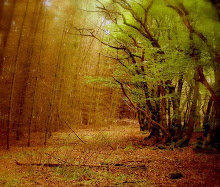The Medici family’s the first ones to spark the Renaissance. They are so wealthy that they decide to hire people to create pretty things for others to ooh and aah and recognize their wealth. They are not the only ones to come up with this idea, there are merely the first. Thousands of individuals became wealthy by Mediterranean trade. So these wealthy people have nothing else better to do with the wealth so they decided to flaunt it to display their wealth and make people jealous,
Eventually, the church became jealous and wanted some of the art too. At the same time, when we tie it into humanism, one of the overwhelming subjects of Renaissance art is religion, partly because Church becomes the #1 patron of art. But all art goes back to the main themes of
Castiglione: The first one to present, in the form of a book called The Book of the Courtier, what it is to be a Renaissance man. He describes that the person must be well rounded, so rather than being skillful in one or two areas, the person must be educated in science, math, literature, participate in physical activities such as fencing.
Petrarch: A poet who perfected the art of the sonnet.
Boccaccio: Wrote the Decameron, a series of ten stories about a group of people who has isolated themselves to escape the Black Death. His stories give a great snapshot of what medieval life was like. Extreme likeliness to The Canterbury Tales.
Machiavelli: His most famous work is a story called The Prince, about a young prince who ponders on how to rule his kingdom in the future and Machiavelli is his tutor. Machiavelli teaches the prince to rule with an iron fist.
Erasmus: Wrote In Praise of Folly in honor of his friend Thomas More. More in Dutch means Folly, FYI.
Thomas More: Write the book Utopia, meaning perfect society or “no place” because he feels a Utopia doesn’t exist. He becomes a chancellor in
Gutenberg: Invented the printing press. By increasing the speed of printing, books become cheaper and people become more literate. The first book to be printed this way is the Bible, thus converting lots also. Within 50 years, every city has one, it becomes that popular.
Art begins to look more realistic as paintings and sculptures depict more realistic humans and postures. A proportion scale to the human body is discovered to prevent the body looking weird and defected. Natural poses replaced the stiff ones of previous statues and painting subjects. FYI, despite the artists being humanists, all paintings have heavy religious overtones.
Botticelli: Known for great composition in his paintings. Painter of the Birth of Venus.
Masaccio: Master of Linear Perspective. He was the first to apply the technique of linear prospective to his paintings, thus making his paintings look 3-D. Used the technique of the vanishing point. He's also famous for created the illusion of depth.
Giotto: Arranged things in a painting using lines and such to direct the viewer’s eye to the subject.
Ghiberti: Won the competition and carved biblical stories on the first set of bronze doors of the Baptistery by entering the best scene for the sacrifice of Isaac. He slipped his own bust into the doors. Good friends with Donatello.
Brunelleschi: Was the runner up to the same competition above. But because he was so good, they led him do the dome of the Baptistery.
Leonardo: Perhaps the greatest painter and inventor ever, he has only one known portrait of himself. Although it isn’t proven, Leonardo might’ve been in the bodysnatching business because his sketches could not have been done without the aid of a visual model, thus a skeleton, muscles, skulls, things you find after you cut people up. If he was caught participating, he could be executed. In his whole career, he used only two women for modeling. His notebooks contained many anatomy sketches and applied them to his art and practice sketches. He illustrates his scientific ideas and inventions in his notebooks that involve geometry with art, and diagrams that involve complicated physics. Lastly, as a well rounded Renaissance man, he does music too.
Raphael: He’s actually a student of Michelangelo. His art is so similar to Michelangelo that it’s hard to tell them apart and it’s implied that Raphael was trying to copy his art and techniques. His most famous painting is the The School of Athens where he replaces the faces of Greeks with the faces of Renaissance men.
Donatello: sculpted the first ever free standing David. David becomes really popular to sculpt, but Donatello was the first to sculpt him but Michelangelo’s version was the most popular.
Michelangelo: Claimed that stone talked to him, that he can see the things inside and chip away the excess rock to free them. Painted the ceiling of the Sistine Chapel, however some parts are repainted for “cover ups” and also got into trouble for painting a butt above the altar to eternally moon the pope as he preach.
Holbein: Famous for his detailed portraits.

No comments:
Post a Comment